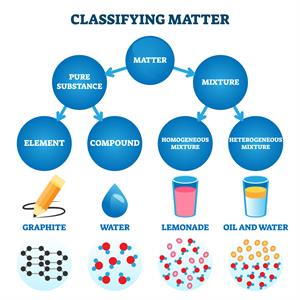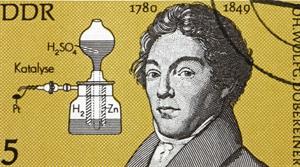PDF chapter test TRY NOW
Introduction to the Elements:
Everything in this universe is made of matter. We live in a world of substances with great diversity. The combination of various elements produces substances. All the elements are individual in their nature and property. Over the years, scientists have looked for different ways to categorise these elements according to their properties.

We learned in Class IX that matter exists in elements, compounds, and mixtures, with elements containing just one type of atom. Do you know how many elements have been discovered so far? We currently know about \(118\) elements. Each one has its own set of characteristics. Only \(94\) of the \(118\) are naturally occurring.
As various elements were being found, scientists collected more and more information about the properties of these elements. They found it challenging to organize these elements. They began looking for some pattern in their properties, based on which they could study such a large number of elements with ease.
Early attempts at element classification:
We've been studying how various objects or live things can be categorised depending on their characteristics. We come across examples of arrangements based on some features in a variety of situations. Soaps are stored together in one spot of a shop, while biscuits are kept together in another. Even among soaps, bathing soaps and cleaning soaps are kept separate. Similarly, scientists attempted to classify elements according to their properties and obtain an orderly arrangement out of chaos.
We've been studying how various objects or live things can be categorised depending on their characteristics. We come across examples of arrangements based on some features in a variety of situations. Soaps are stored together in one spot of a shop, while biscuits are kept together in another. Even among soaps, bathing soaps and cleaning soaps are kept separate. Similarly, scientists attempted to classify elements according to their properties and obtain an orderly arrangement out of chaos.
The initial attempt to classify the elements resulted in grouping the then-known elements as metals and non-metals. More classes were tried as our understanding of elements and their properties increased.
Dobereiner’s triads:

Johann Wolfgang Döbereiner (1780-1849)
Johann Wolfgang Döbereiner worked as a pharmacist in Münchberg, Germany, before studying chemistry at Strasbourg. He later became a professor of pharmacy and chemistry at the University of Jena. Döbereiner was the first to identify similar triads of elements and to discover platinum as a catalyst, which led to the development of the Periodic Table of Elements.
In \(1817\), Döbereiner proposed grouping elements based on their relative atomic masses. He organised three elements into each group. He referred to these groups as 'triads' (tri-three).
Dobereiner's law:
Dobereiner discovered that the atomic mass of the middle element is approximately equal to the average of the atomic masses of the other two elements when the three elements in a triad are grouped in ascending order of their atomic masses. This is known as Dobereiner's law.
Dobereiner's triads table:

In the triad group \(1\), the arithmetic mean of atomic masses of lithium (Li) \(1\)st and potassium (K) \(3\)rd elements, (\(6.9\) + \(39.1\))/\(2\) = \(23\). So, the atomic mass of sodium (Na) (middle element) is \(23\).
In the triad group \(2\), the arithmetic mean of atomic masses of chlorine (Cl) \(1\)st and iodine (I)\(3\)rd elements, (\(35.5\) + \(126.9\))/2 = \(79.9\). So, the atomic mass of bromine (Br) (middle element) is \(79.9\).
Disadvantages of Dobereiner's law:
- Dobereiner could know only three triads from the elements known at that time, and all elements could not be listed in the form of triads.
- The law did not apply to the low and high atomic mass of elements.
